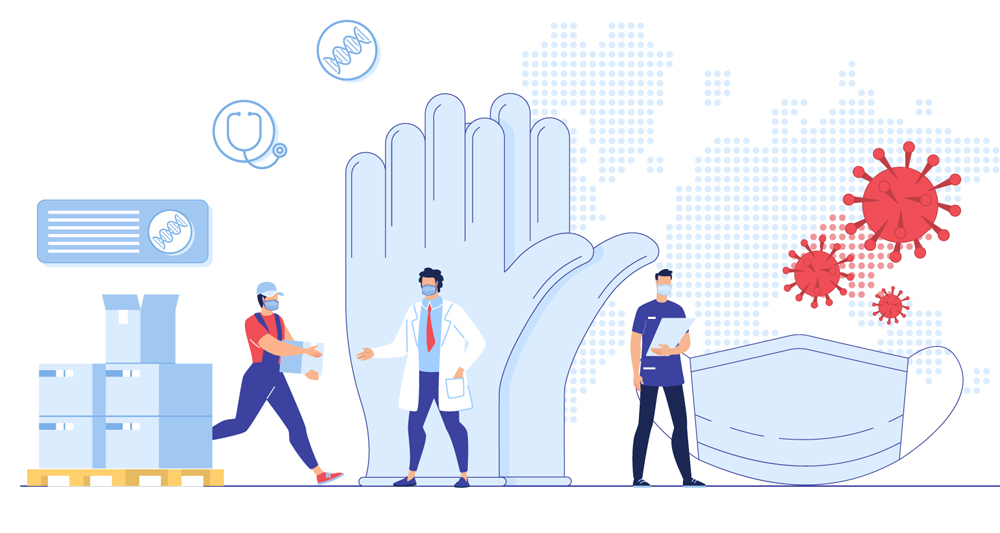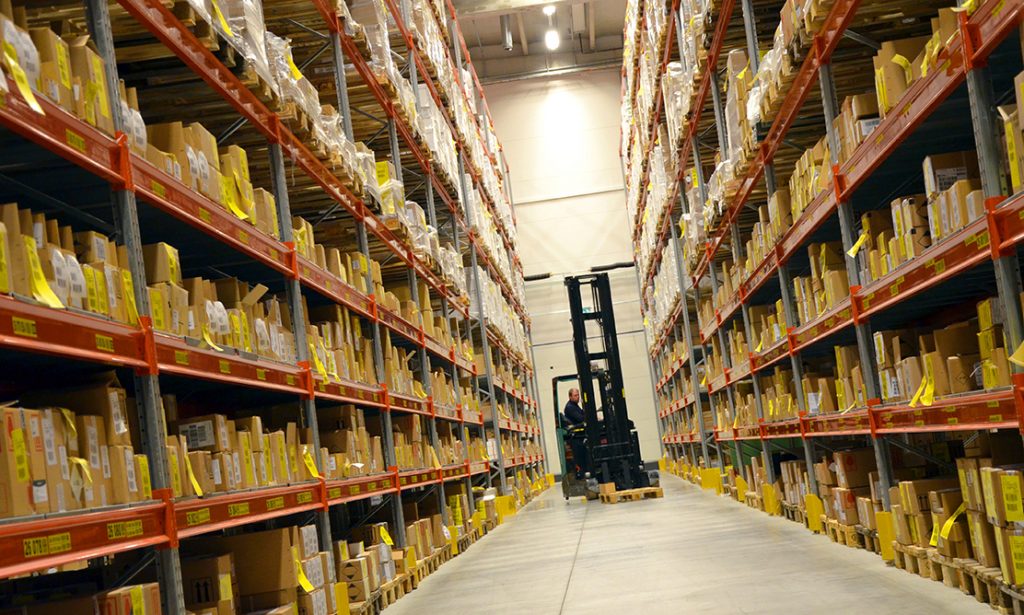Three months or more of supply chain disruption is a long time in the healthcare industry, and lives may be threatened when the much-needed medical supplies and equipment are not readily available for millions in need around the world.
The return to normalcy for the healthcare supply chain is fast becoming a dream that we may not realize in a few months or even years. With the port congestion challenges, lack of resilience in healthcare facilities, cost management issues, and rapid inflation that make the prices of healthcare supplies incredibly high – we may need to be prepared for a new normal rather than things returning to what was there before.
Challenges Impacting the Healthcare Supply Chain

The COVID-19 pandemic has focused on the shortcomings of global supply chains when confronted with disruptions caused by extreme events. The blows that developed resulted in widespread shortages and surging prices of critical medical supplies and personal protective equipment (PPE) when they were needed most. Some of these disruptions have always been present, yet no executive decisions have ever been made to curb them some of these disruptions include the following issues.
Lack of Resilience
After years of dashing after supply chain effectiveness, you, governments, and healthcare providers in the U.S and worldwide realize that this has come at the expense of resilience. Supply chain resilience is the ability of a given supply chain to prepare for and adapt to unexpected events; manage to adjust to sudden disruptive changes quickly.
Healthcare facilities hold medical supplies that last only a few days, but this proved to be unfortunate when demand and prices for PPEs and other supplies were hiked due to the pandemic, as reported by Forbes, and witnessed by Americans.
Leaving most health care facilities with an acute shortage that directly trickles down to you when you seek medical attention in a facility with no drugs, no PPEs, and other provisions.
Lack of Visibility and Inefficient Management of the Stock

The lack of resiliency in healthcare organizations often originates from poor visibility, specifically when you lack quick access to central, consumable, real-time information from dispersed data sources and isolated systems.
This makes it difficult to regulate the healthcare supplies needed, supplies in stock, and the scope of future demand. In the end, you can’t manage what you can’t see or measure. This leads to a disruption in supply whereby you can’t get the services and products you need from your health care provider.
Cost Management
You notice that during the pandemic, costs amplified as demand increased for personal protective equipment (PPE) and medical supplies. Currently, medical supply expenses are projected to exceed personnel costs as the biggest expense in healthcare. Unfortunately, studies show that most inventory decisions made to adjust to these disruptions are not the best and nearly half are pointless.
It isn’t surprising, considering that health systems typically order supplies based on past models and physician partiality rather than actual use and expected demand. This leads to huge waste, delayed procedures, high inventory, and carrying costs, leading to a lack of necessary health care products.
Integration and Interoperability

Integration shortcomings that you experience from an organizational, process, and technological view also contribute to increased cost and visibility-related issues.
Suppose you are not able to incorporate all related processes. In that case, you will incur more costs in individual tasks that could have been performed by a single application, such as a system that reads a barcode and gives you the stock remaining on your shelf and a replacement level just by the click of a mouse button.
Data integration across different Enterprise Resource Planning (ERP), legacy supply chain structures, external sources, and tools such as Radio Frequency Identification (RFID) barcode readers that feed product data back into these systems is needed to operate across the board.
Improved integration and inter-operability enable better decision-making and allow your organization to collaborate better and get ahead of disruptions.
Port Congestion
You may find healthcare supplies included in imported containers. Globally, medical devices, manufacturing, and circulation are treated as critical and should be given priority. The production and movement of the said healthcare products in the United States can continue with little to no interruption. However, the current challenges at the ports don’t allow for the priority to be practiced since once the containers arrive, they’re in the same queue as other goods coming in, regardless of type.
The deliberate nature of loading and offloading containers limits the chances of loading healthcare products as soon as they dock. Once your goods have been received at the port, they are first loaded onto vessels determined by their last stop port and weight distribution of the cargo. This makes it even harder and longer for the products to reach you eventually.
Possible Solutions

You have to incorporate technology in your facility; a supply chain management software with end-to-end transparency constantly collects and analyzes data to monitor the inventory of the entire supply chain in real-time, which will solve more than half the problems you are experiencing.
Through this analysis, the software can predict and mitigate supply disruptions and, offer suggestions to build resilience in your organization’s supply chain, monitor and follow up on what is available that has been used. The software can also make projections on what is needed and when it’s needed, thus making it possible for you to make intelligent waste-free procurements.
Cloud-based RFID technology allows for real-time tracking that prevents shortages while enabling healthcare professionals to quickly and accurately see their inventory.
Globalnews wire reported that Artificial Intelligence (AI)-enabled, and supply chain management (SCM) structures incorporated in supply chain control towers can help meet the challenges presented by the pandemic by leveraging five key capabilities:
End-to-end visibility
Intelligent forecasting and demand sensing
Touchless planning and improved productivity
Elevated planning and automation
Creating a collaborative ecosystem
The Bottom Line
Healthcare supply chain disruption issues eventually affect patients everywhere and may cost a lot of lives. If you have been scheduled for an operation and there is a deficiency in drugs used while operating, the operation cannot be aptly performed on you, thus putting your life at risk. These disruptions can be controlled and eventually stopped when all stakeholders adopt good business practices and embrace technology that enables easier tracking, monitoring, and real-time analysis.
One company who is doing above and beyond to help alleviate supply chain issues is Seattle-based health-tech startup, Bttn. They’re an online medical supply store that is harnessing the power of big data analytics, ecommerce, and more advanced technologies to help hospitals stay ahead of supply chain shocks and procure the most needed medical supplies required to treat patients with many types of needs, all while saving these healthcare facilities a tremendous amount of capital on medical supplies due to their wholesale pricing and other tactics too.
We’re not out of the woods yet, however those in healthcare embracing technology and better medical supply procurement methods will undoubtedly not be as affected as much as those who are not.



